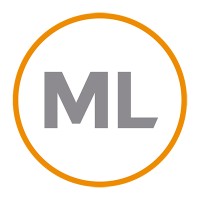
WHY IT COULD PAY TO CHECK YOUR TAX CODE, ESPECIALLY IF YOU’VE RECENTLY RETIRED
Released On 30th May 2024
If you’re employed, your employer automatically calculates and deducts the Income Tax you owe before you receive any funds. Similarly, if you draw an income from your pensions, your provider will normally deduct any Income Tax before paying you. They’ll also take any tax that is due from your State Pension. We typically trust that they’re taking the right amount of tax but that may not be the case.
According to Canada Life, British workers overpay an estimated £8.2 billion in tax each year because they’re on the wrong tax code.
Your tax code indicates what level of tax you should be paying and whether you have any exemptions or allowances to apply. If it’s wrong, you might overpay tax without realising. Equally, you could underpay and end up with a surprise bill from HMRC.
Mistakes with your tax code could be more likely if your circumstances have recently changed – if you’ve retired, for example. Luckily, it’s easy to check your tax code and amend it if necessary.
Only 38% of people are certain they’re on the right tax code
HMRC assigns you a tax code depending on your situation. Your employer or pension provider then use this code to determine how much tax you need to pay:
- L – Entitled to the standard tax-free Personal Allowance of £12,570 in 2024/25.
- BR – Income is taxed at the basic rate.
- D0 – Income is taxed at the higher rate.
- D1 – Income is taxed at the additional rate.
- 0T – The Personal Allowance has been used or relevant information to determine the tax code is missing.
If your circumstances haven’t changed recently and you’re on the right tax code, you should be paying the correct amount of tax. However, your code could change for several reasons including:
- Starting a new job without the correct paperwork
- Receiving an income from multiple sources
- A change to your income causing you to move into a new tax bracket
- A change to taxable state benefits (including the State Pension)
- Retiring and drawing an income from your pensions.
In these situations, HMRC will usually update your tax code. However, in certain circumstances, they don’t have all the necessary information and, as a result, might put you on the wrong tax code.
This confusion might be more common than you realise. Canada Life found that only 38% of people were certain they were on the right tax code and 43% who checked their code found that they were on the wrong one.
71% of those on the wrong tax code were paying more than they should be which often happens when you start accessing your pensions for the first time.
HMRC need to be notified when you access your pensions for the first time
When you finish working, you typically receive a P45 form. This paperwork details your current tax position and gives HMRC the information they need to determine your tax code.
You normally need to give your P45 to your pension provider when you start drawing from your pension for the first time so they can pass it to HMRC. In a situation where you were not recently employed and may not have a P45, when you start flexibly accessing a pension for the first time, your provider should contact HMRC to inform them.
However, if HMRC doesn’t have the relevant information, you will likely be put on an emergency tax code. This tax code assumes that you will receive the same payment each month and Income Tax could be charged as if you were an additional-rate taxpayer, regardless of how much income you draw from your pension.
It’s very common for you to be put on emergency tax in the first month that you draw from a pension. As a result, you could overpay significantly if you don’t check your tax code and rectify any mistakes.
Additionally, you need a separate tax code for each pension you hold, so you may need to repeat the process several times.
It’s your responsibility to make sure you’re on the correct tax code
It’s your responsibility to check your tax code is correct and there are several ways to do this. HMRC should notify you if your tax code changes, and if you’re drawing from a pension, you’ll receive a P60, or “end of year certificate”, from your pension provider. Your P60 should have details about your tax code and what tax you paid on your pension income in that tax year.
Alternatively, you can contact HMRC directly and ask them about your tax code if you’re unsure. They will update your tax code, so you pay the correct amount moving forward.
If you’re on the wrong tax code and have overpaid, you may need to claim a refund. Normally, any overpaid tax will be returned through a tax code adjustment, meaning you pay less in the future. However, if you overpaid in previous years, you might receive a cheque in the post instead.
It may be beneficial to double-check your tax codes regularly to ensure that you’re not paying more than you should.
Please note -This blog is for general information only and does not constitute advice.






